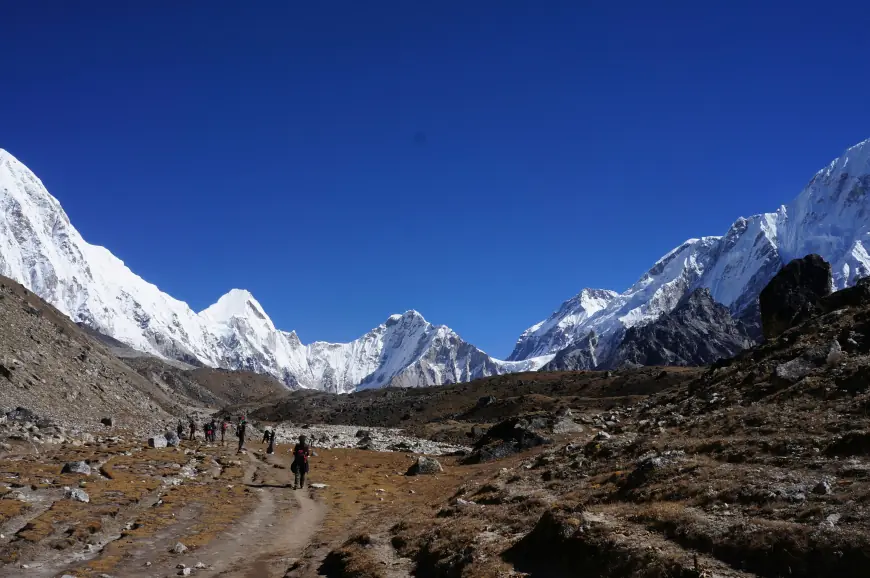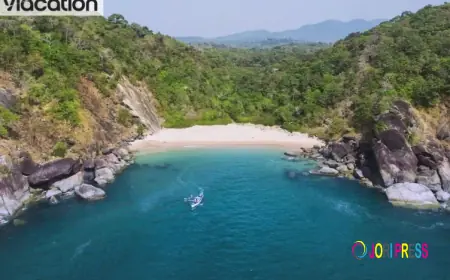Everest Base Camp Trekking Tips for a Safe and Successful Hike
Discover essential tips for a safe and successful Everest Base Camp trek. From training and packing to altitude safety, this guide has you covered.

Standing in front of the world’s tallest mountain is a dream for many people. The Everest base camp trek makes that dream come true. But before you start your journey, it’s important to be prepared. This trek is beautiful and exciting, but it can also be tough. With the right tips, you can stay safe and enjoy every step of the way.
Let’s explore how to make your Everest base camp trek a safe, fun, and unforgettable adventure.
Train Before You Go
Walking to Everest base camp is not like a regular walk in the park. You will be walking 5 to 7 hours a day, sometimes uphill, and at high altitude. To enjoy the trek, your body needs to be strong and ready.
Start training a few months before your trip. Go for long walks. Climb stairs. Try hiking with a backpack. Do exercises that make your legs and heart stronger. The fitter you are, the more fun you’ll have.
Pack Smart and Light
You don’t need to carry a lot of things, but the right items can make a big difference. Here are a few must-haves:
-
Warm clothes (layers are best)
-
A good pair of trekking boots
-
A waterproof jacket
-
Gloves and a warm hat
-
Sunglasses and sunscreen
-
A refillable water bottle
-
Snacks like energy bars
-
A headlamp
-
Personal medicine
-
A sleeping bag (check with your trekking agency)
Keep your backpack light. If you hire a porter, only carry what you need during the day.
Go Slow and Stay Safe
The biggest danger on this trek is not tired legs—it’s altitude sickness. As you go higher, there’s less oxygen in the air. If you walk too fast or gain height too quickly, you might feel dizzy, tired, or even sick.
The best rule is: go slow. Take rest days to let your body adjust. Drink lots of water. Listen to your guide and your body. If you feel unwell, speak up.
Useful Trek Facts
Here are some quick facts to help you understand the Everest base camp trek:
-
Average Duration: 12 to 14 days (round trip from Lukla)
-
Total Distance: About 130 kilometers (80 miles)
-
Maximum Elevation: 5,545 meters (18,192 feet) at Kala Patthar
-
Difficulty Level: Moderate to challenging
-
Best Seasons: March–May and September–November
This trek is not technical, but it does test your strength and patience.
Eat Well and Stay Hydrated
Food gives you energy, and water keeps you strong. You’ll eat meals at teahouses along the way. Most offer warm dishes like dal bhat (rice and lentils), noodles, and soups. Eat enough even if you’re tired. Avoid meat after Namche Bazaar—it may not be fresh.
Drink 3 to 4 liters of water a day. Bring water-purifying tablets or a reusable filter bottle to stay safe.
Travel With a Guide or Group
While some people trek alone, going with a guide or group is much safer—especially if this is your first time. Guides know the trail, the weather, and how to handle emergencies. They also help you learn about local culture and connect with villagers.
A good guide is not just a helper—they become part of your journey.
Respect the Culture and Nature
The Everest region is home to the Sherpa people. They are kind, welcoming, and deeply spiritual. You’ll pass prayer flags, monasteries, and chortens. Walk respectfully. Always ask before taking photos of people.
Also, don’t litter. Bring a small trash bag and carry your waste. The mountains are beautiful—help keep them that way.
Be Ready for the Unexpected
The weather in the Himalayas can change fast. It can be sunny in the morning and snowy by afternoon. Be prepared for all kinds of weather.
Also, flights to Lukla (the starting point) often get delayed due to fog or wind. Plan extra days at the end of your trek, just in case.
Enjoy the Journey, Not Just the Goal
Reaching Everest base camp is a big achievement—but don’t rush. The trek is filled with magic: the sound of yaks, the kindness of locals, and views of massive peaks like Ama Dablam, Lhotse, and Everest.
Take time to stop, breathe, and look around. These are the moments that stay with you forever.
You Can Do It!
Trekking to Everest base camp may sound hard, but with the right planning and mindset, it’s very possible—even for first-timers. Train well, pack smart, go slow, and stay positive.
The mountains are waiting. Are you ready to take the first step?
What's Your Reaction?
 Like
0
Like
0
 Dislike
0
Dislike
0
 Love
0
Love
0
 Funny
0
Funny
0
 Angry
0
Angry
0
 Sad
0
Sad
0
 Wow
0
Wow
0


















































